
 Image: Gordon Mah Ung/Rob Schultz
Image: Gordon Mah Ung/Rob Schultz
Pixel-pushing, PC-melting graphical firepower
So you built yourself a brand-new gaming rig, you’ve slotted your sweet new graphics card into the PCIe slot, you’ve sealed up the case, and you’ve heard it all POST—congrats! Now it’s time to throw games at your fresh build until it breaks, then cry at the thought that if you’d spent just 200 dollars more you could’ve played at 4K instead of a mere 1080p!
Don’t know what games to start with? No old favorites? We’ve got just the ticket when it comes to handing your computer a stack of heavy weights and saying, “lift this.” These punishing PC games will bring even powerful rigs to their knees—but the eye candy is utterly delicious.
Editor’s note: This article is updated frequently with the latest, most potent games around.
Control
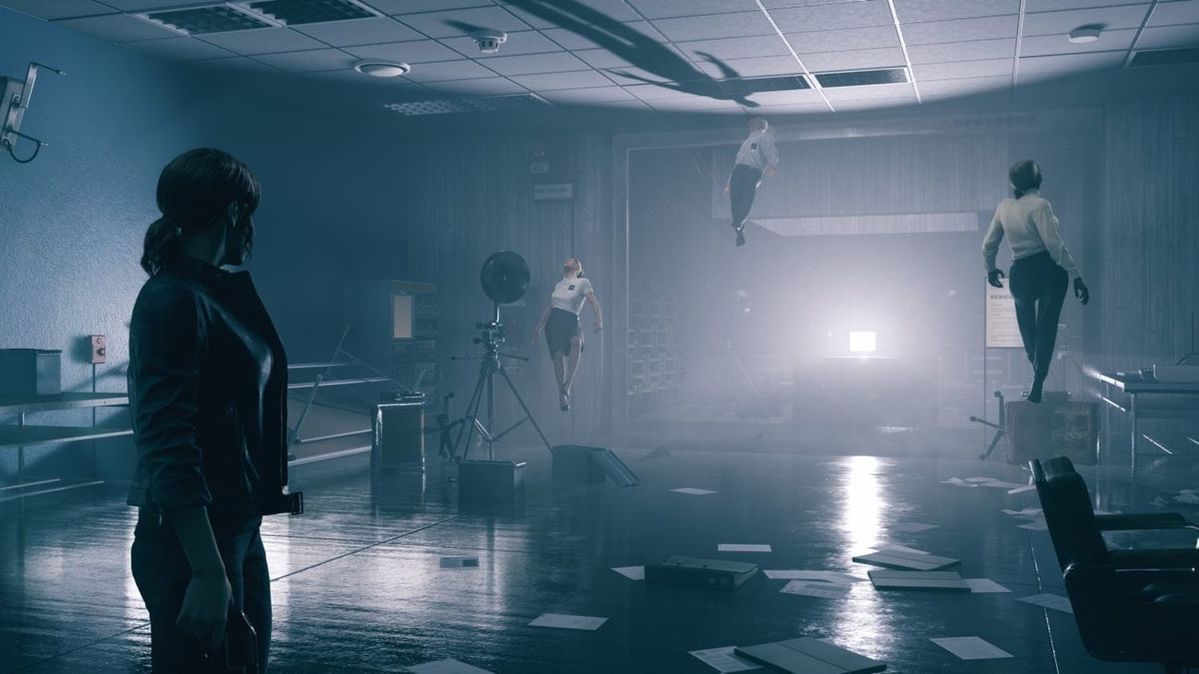
Image by Remedy
There are plenty of reasons to play Control ($60 on Epic Games Store). Drawing inspiration from New Weird literature like The Southern Reach Trilogy, from the SCP Foundation, from David Lynch, Control is Remedy’s best game since Max Payne 2, or at least its best-realized. Months later I’m still thinking about my journey through the Federal Bureau of Control and its headquarters, the Oldest House.
But more pertinent to this list, Control is also the reason to own a GeForce RTX graphics card with its real-time ray tracing capabilities. It’s the showstopper, the game that makes people go “Oh, I understand why ray-tracing is important.” The Oldest House is full of glass—office partitions, poster frames, televisions—and real-time reflections turn each and every one into a mirror. The difference is immediate and obvious, in a way that none of the other RTX implementations have been so far. Hell, you can even see reflections (albeit blurrier) on the polished concrete floors. It’s stunning, and makes Control’s world feel just that little bit more lifelike.
Metro Exodus
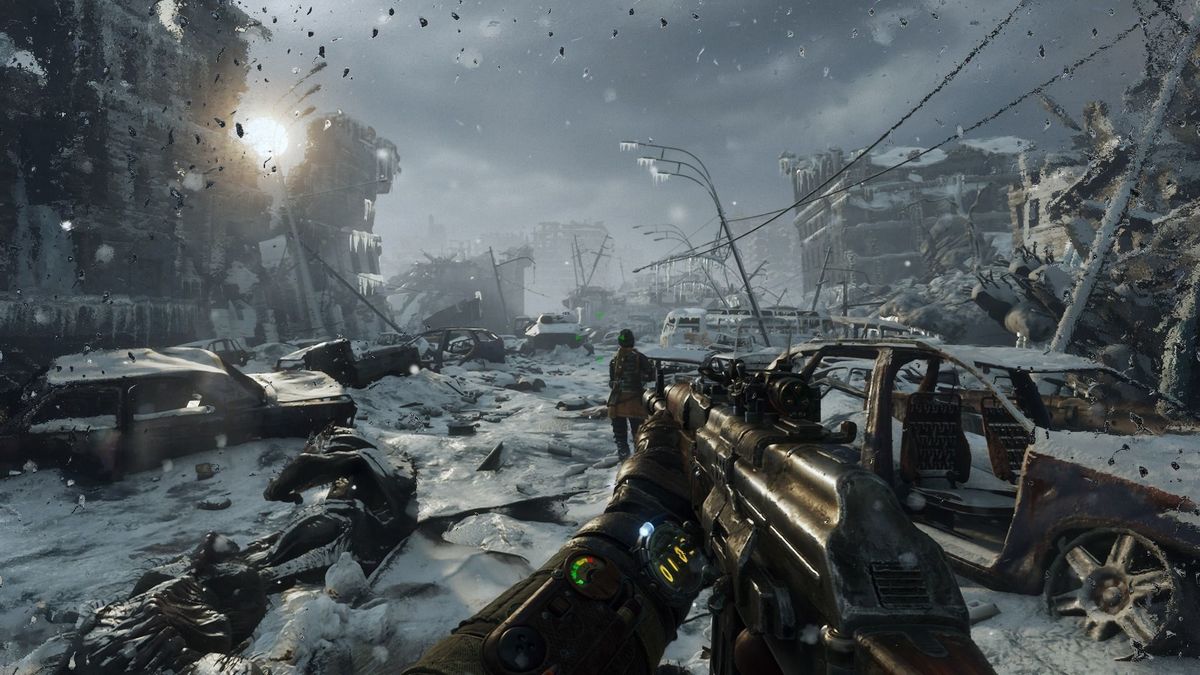
Image by Hayden Dingman/IDG
I didn’t think open-world Metro could work, but it does—and it looks damn good. Exodus ($60 on Epic Games Store) lacks the same oppressive atmosphere as its forebears, but it finds a different kind of post-apocalypse away from the crumbling concrete of Moscow. Creeping along the icy shores of the Volga, straining to see a Demon circling in the moonlight, and all you can hear is Artyom’s heavy breathing and the crunch of snow under his boots. It’s tense as hell.
It’s even better with ray-tracing enabled. Metro’s real-time ray tracing implementation is subtle—much subtler than in Control—but global illumination allows for some fancy lighting tricks. I particularly love how it enhances stealth sequences, creeping through and slowly turning off lanterns and extinguishing fires until the entire building is shrouded in shadow. You can do that with RTX off as well, but it’s never quite as dark.
Call of Duty: Modern Warfare
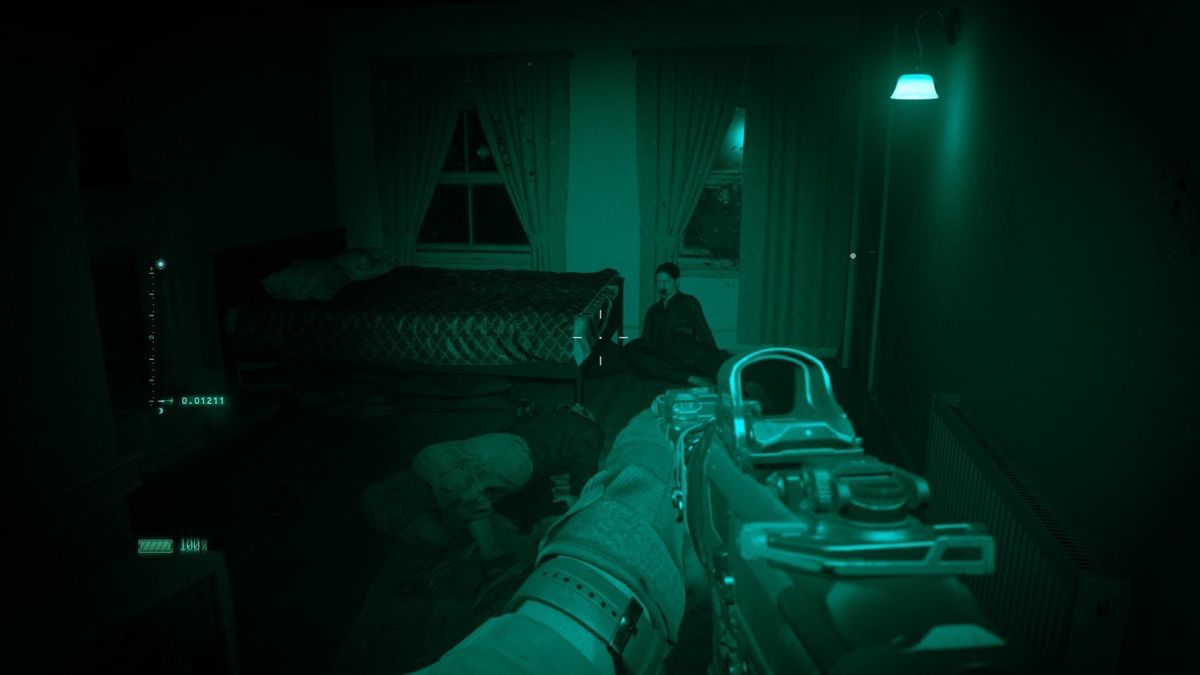
Image by Hayden Dingman/IDG
Call of Duty: Modern Warfare ($60 on Battle.net) is back for 2019. Eight years and an entire console generation after Modern Warfare 3, Call of Duty finally returns to that style of torn-from-the-headlines storytelling. With it comes a grittier aesthetic that takes full advantage of the strides made in performance capture this decade.
It looks fantastic. Hard to believe there was ever a time where Call of Duty was mocked for simplistic visuals. (That was around the Modern Warfare 3 era, actually.) Nowadays, Call of Duty turns out some of the best interstitial cutscenes of any series. Hell, the characters even have arm hair. And the in-game action can be just as impressive, with the night vision sequences having a raw, found-footage look that’s realistic enough to be unsettling.
Those with an Nvidia GeForce RTX card can also enjoy the benefits of ray-traced shadows. I have to warn you though: Of all the RTX games, Call of Duty’s implementation is one of the most subtle. The more detailed shadows are especially noticeable with foliage, but it’s not quite as in-your-face as other titles like Control. Still, a nifty demonstration of ray-tracing’s potential.
Red Dead Redemption II
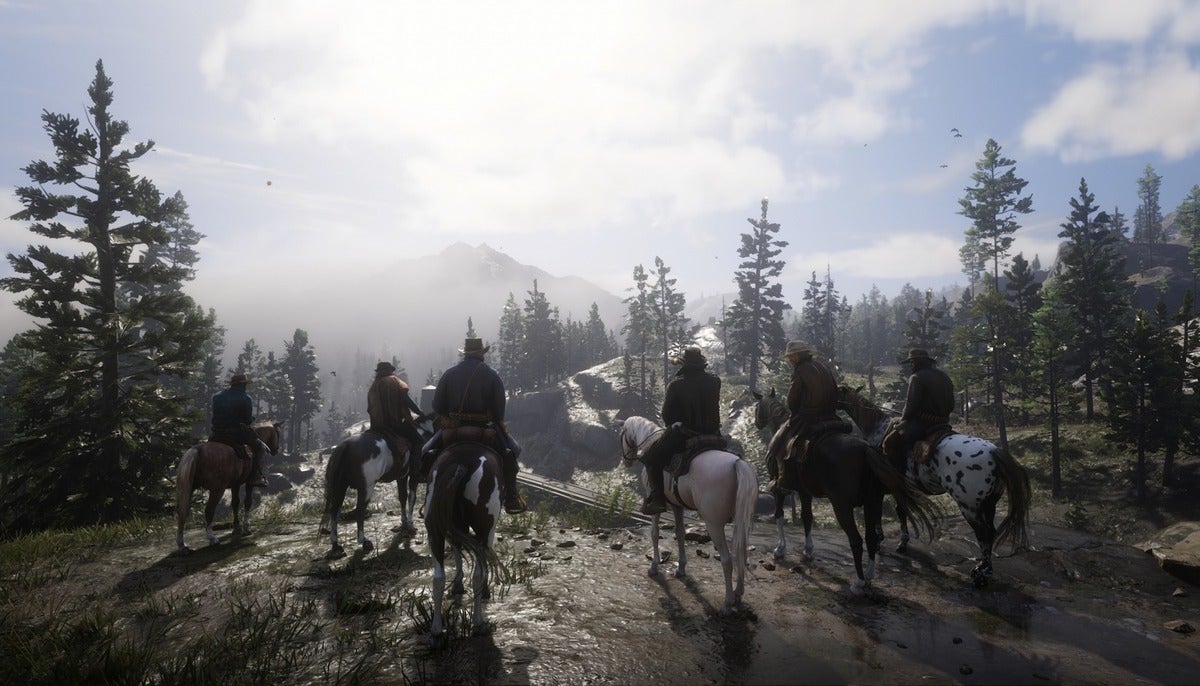
Image by Hayden Dingman/IDG
Red Dead Redemption II ($60 on Epic Games Store) wasn’t made for modern-day PCs. I’ve never seen a game bring an Nvidia GeForce RTX 2080 Ti to its knees as hard as Red Dead Redemption II. Even at 1080p, we struggled to clear 30 frames per second with all the settings maxed out. I look forward to admiring its full potential in 2025 or thereabouts. (For a still-gorgeous look that works today, drop graphics settings to High.)
That said, it’s the little details that really set Red Dead Redemption II apart. I’m especially enthralled by its mornings, the way the fog rolls in off the lake and envelops camp in an otherworldly glow. Or the way Arthur rubs his beard absentmindedly during conversations.
As I wrote in our review, “I hesitate to compliment it overmuch given there’s a good chance Red Dead Redemption II was built on the back of long, hard hours for developers. It took almost a decade to make this game, and even then there wasn’t enough time to do it ‘the right way.’ That in mind, it’s hard to recommend any other studio follow Rockstar’s lead. And yet I’m impressed by it, in spite of myself.”
Destiny 2
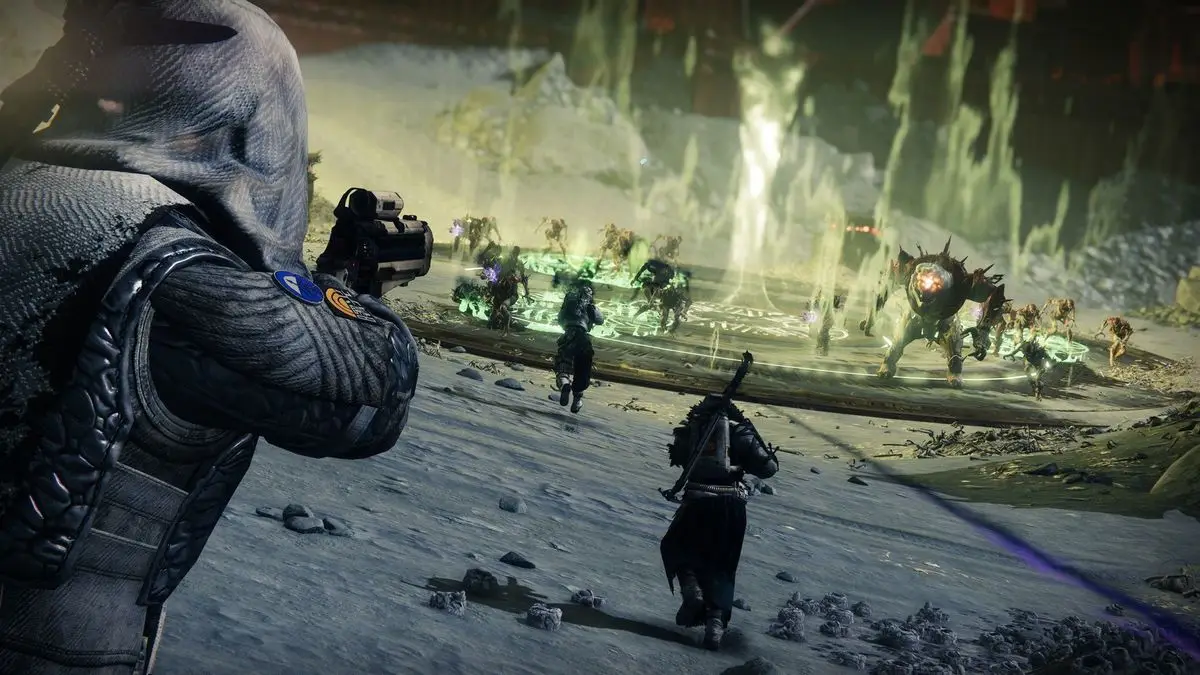
Image by Bungie
Is Destiny 2 (free on Steam) a performance hog? Not to the same degree as some other games on this list, that’s for sure. But maybe that makes it more impressive that Destiny 2’s one of the best-looking shooters on PC. It doesn’t approach the realism of Battlefield, but I struggle to name another shooter as consistently beautiful as Destiny 2, or with any environment as dynamic as the Forsaken expansion’s Dreaming City. It’s jaw-dropping to behold for the first time.
Heading into its third year, Destiny 2’s as good as it’s ever been. I know, I know, Destiny fans have been through this wringer before—and to be fair 2019’s Shadowkeep expansion didn’t reach the same heights as its predecessor, 2018’s Forsaken. The Bungie-Activision divorce has led to big changes, though. Destiny 2 moved to Steam, forked off a generous free-to-play version, reworked the Eververse marketplace to reduce the presence of loot boxes and change how cosmetics manifest, and more. All positive developments, and good omens for the future.
Division 2
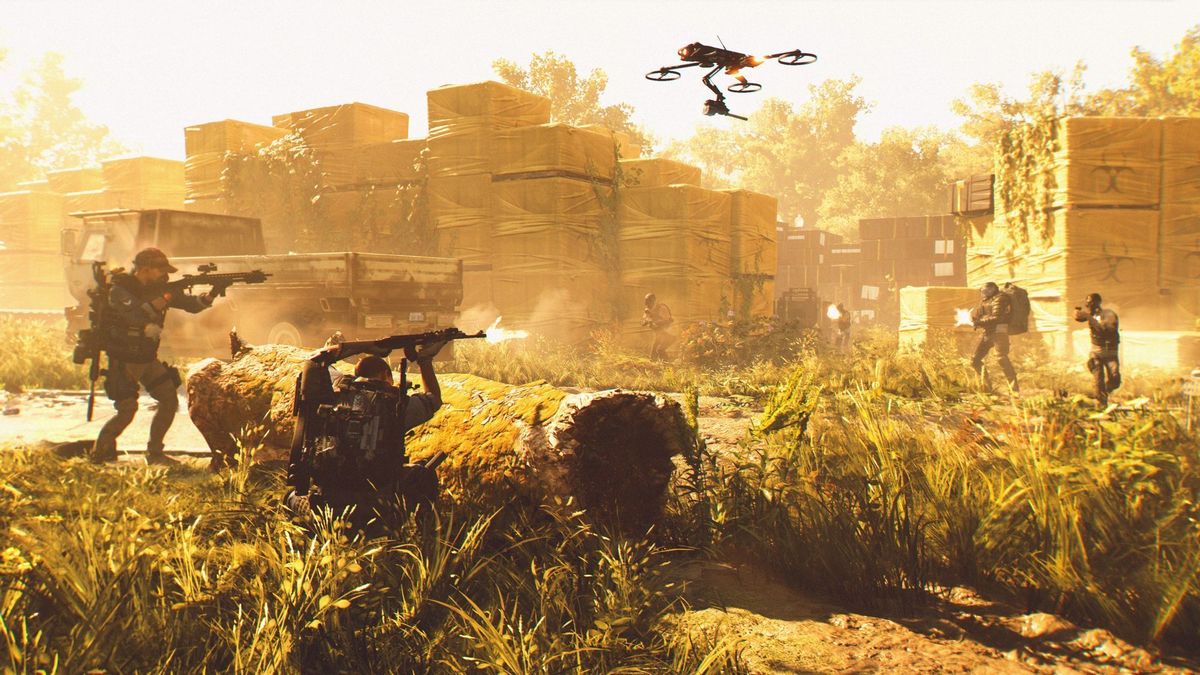
Image by Ubisoft
How good did The Division look? Released in 2016, it lasted three years on this list—only to be replaced by its successor, The Division 2 ($60 on Uplay). And really that’s not so cut-and-dry a replacement as it seems. Some of The Division’s visual touches are still unmatched, like thick snow falling off car windows when jostled.
The Division 2’s swampy Washington, D.C. summer has a different feel, but Ubisoft’s devoted just as much attention to detail. The main story missions all take place in different D.C. landmarks—monuments, museums, important government offices—packed full of bespoke scenery. Fighting through the Air and Space Museum isn’t really all that different from fighting through the Lincoln Memorial or the Capitol or what-have-you, but each locale feels unique. That’s important when you’re grinding out loot for hours upon hours.
Battlefield V

Image by DICE
A prediction: As long as this list exists, there’ll be a DICE game on it. As we close out 2019 that game is Battlefield V ($60 on Origin), DICE’s first foray into World War II in almost a decade. And it’s going to be Battlefield V for a while, as EA’s confirmed there won’t be a follow-up until 2021.
Luckily, DICE continues to build on Battlefield V. October saw the addition of the Pacific theater, introducing the Americans and Japanese into the conflict alongside a reimagined Iwo Jima map (with Wake Island to follow in December). Best of all, they finally added the M1 Garand. Ping.
And it looks as gorgeous as ever. Frostbite has proven to be a disastrous engine for some of EA’s other projects, but it’s sure great at turning out phenomenal-looking shooters. Buildings crumble, tanks burn, and snow scatters in little poofs when stray bullets hit the ground. It even has real-time ray traced reflection capabilities for those who bought one of Nvidia’s fancy GeForce RTX graphics cards, albeit not with the same visual oomph as newcomer Control.
Far Cry 5 and Far Cry New Dawn
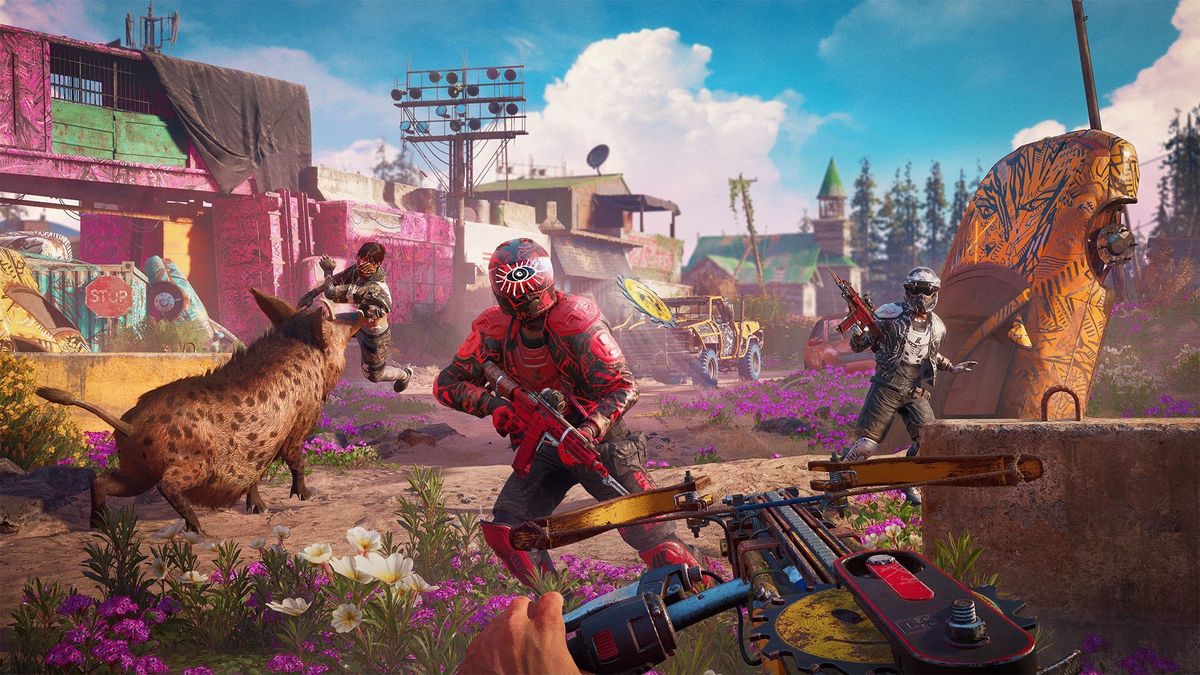
Image by Ubisoft
Far Cry 5’s recreation of Montana is stunning, in no small part because of its variety. Craggy mountain peaks, sprawling wheat fields and abandoned farm equipment, winding rivers hidden by morning fog—wherever you travel there’s some new vista to admire. Even the scattered homes and ranger stations are exceedingly detailed, with a lived-in quality that’s rare in open-world games.
Sure, there’s not much reason to visit this world, and like many Ubisoft games Far Cry 5 ($60 on Humble) ends up feeling more like an art showcase than anything else. But damn, it is very impressive to just walk around in this one with all the bells and whistles.
For a more daring break from tradition, there’s also Far Cry: New Dawn ($40 on Steam). It’s the weird fever-dream followup to Far Cry 5, reimagining the original swathe of rural Montana as a post-apocalyptic nightmare full of sawblade guns, Mad Max types, and lots and lots of flowers. The story isn’t necessarily any better but New Dawn does play around with some new mechanics that bode well for future Far Crys.
Anno 1800
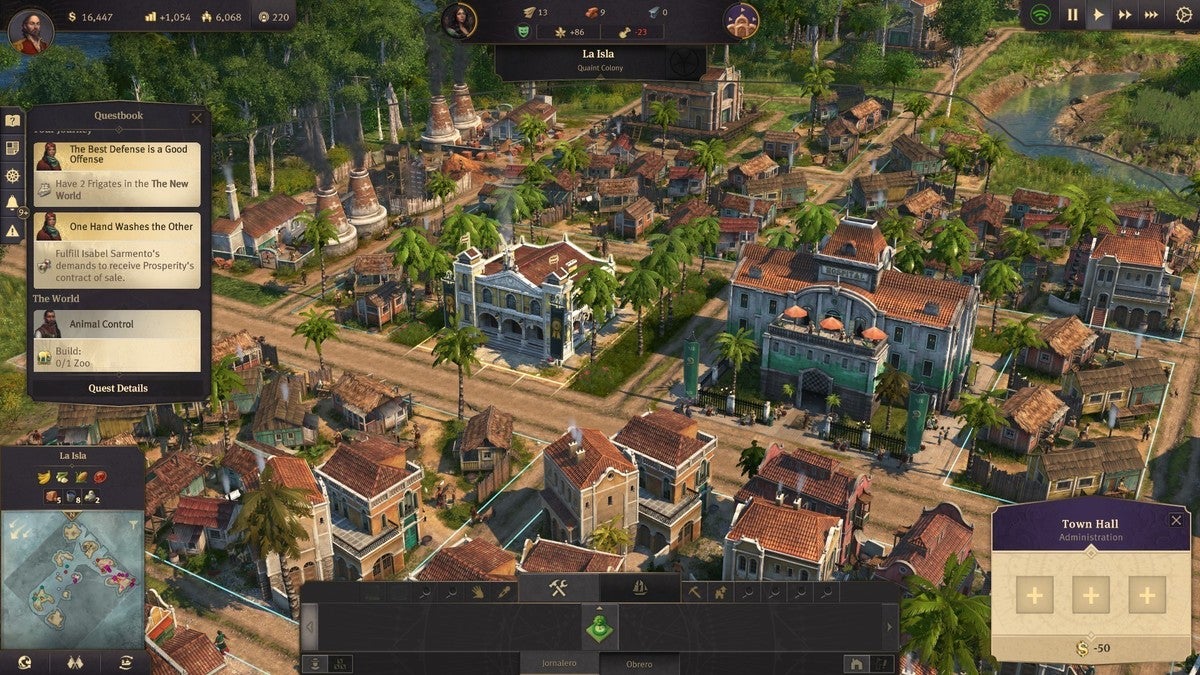
Image by Hayden Dingman/IDG
This list tends to focus on games like Call of Duty or Red Dead Redemption II, games with a certain visual oomph to them. Unlikely as it seems, Anno 1800 ($60 on Epic Games Store) is another game that can absolutely murder a PC. A Victorian Era-themed builder, Anno is like a clockwork city, filled with tiny people and tiny wagons and hundreds of buildings all working at their hundreds of fully-animated tasks. Performance is entirely dependent on the size of your city of course, but spend even a few days playing Anno 1800 and your PC’s going to sweat.
The builder genre in general deserves more respect. Planet Zoo’s caused my GeForce RTX 2080 Ti to drop to sub-30 frames per second at times, as has Cities: Skylines in my more ambitious moments of city planning brilliance. There’s a lot happening on-screen at any given time, and it takes one hell of a PC to keep it all running.
Anthem
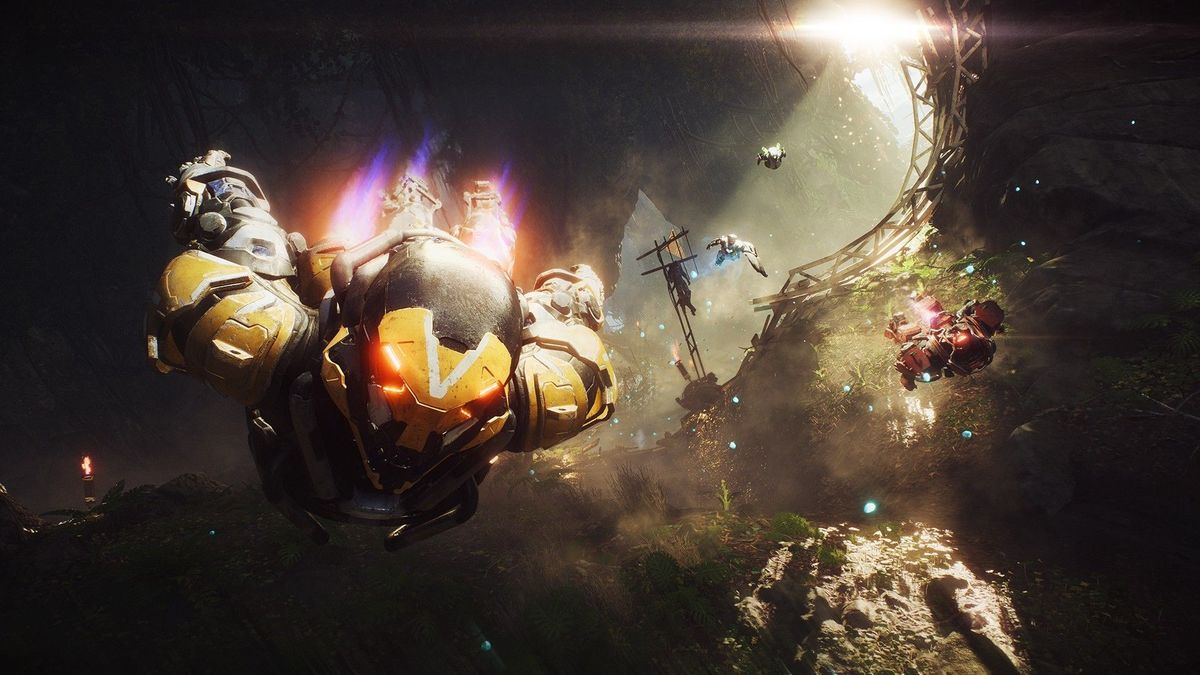
Image by Bioware
Anthem ($60 on Origin) is essentially dead. Maybe not forever, but certainly for 2019. Still, it’s worth celebrating the positive: Anthem looks (or looked) fantastic. There wasn’t much to do in its world, nor was there much world to see. I did love flying around though, dipping in and out of the water, winding between trees. It’s a powerful Iron Man fantasy.
Of course, Anthem looks good because it was built on Frostbite, and Frostbite is reputedly responsible for the rest of Anthem’s issues. So was it worth it? Maybe not. Here’s hoping EA lets BioWare use a different engine again someday. Much as I enjoy adding games to this list, I enjoy playing good BioWare RPGs more.
Just Cause 4
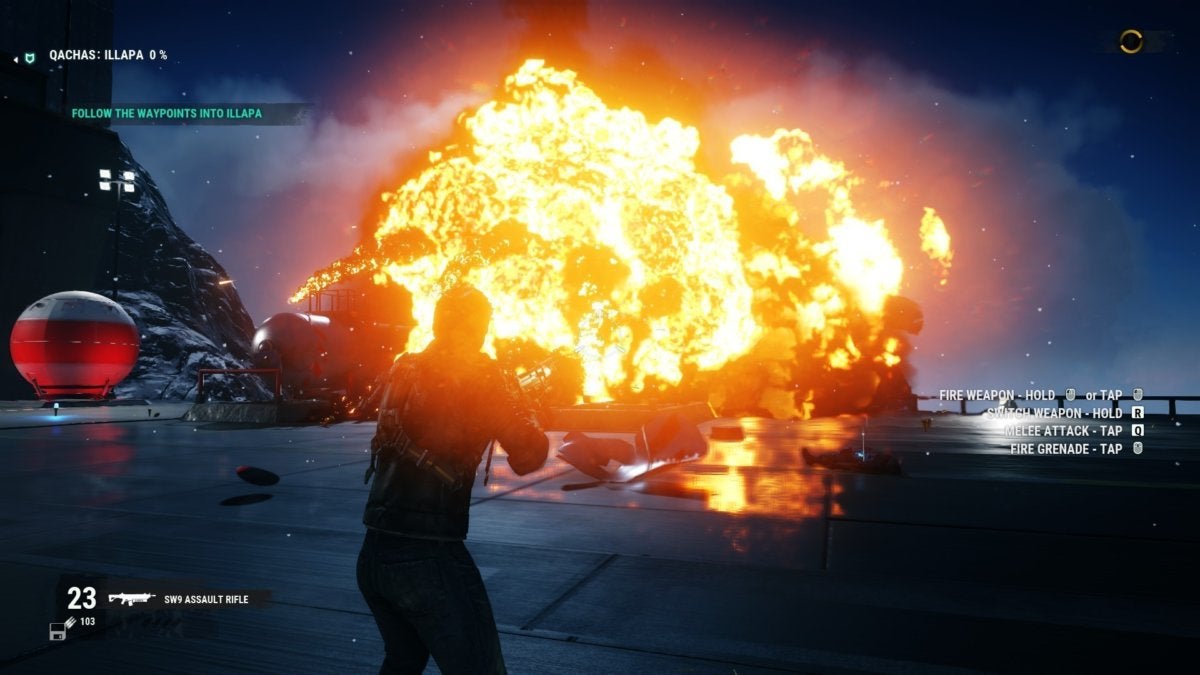
Image by Hayden Dingman/IDG
Just Cause is a series designed to punish your PC. Each one’s got a massive open world and a ton of physics-based explosions, and the games put you right at the center of all the chaos.
In some ways the latest iteration, Just Cause 4 ($60 on Humble) is a step down from its predecessor. Just Cause 3 had better foliage and definitely had better character models. On the other hand, it ran terribly even on high-end hardware. Just Cause 4 will stress your PC, but in a good and healthy way. Even the most complicated explosions go off without a hitch here, and the draw distance is incredible. This is easily one of the largest game worlds I’ve traversed, and you can see a whole lot of it from inside (or outside) a jet.
Assassin’s Creed: Odyssey
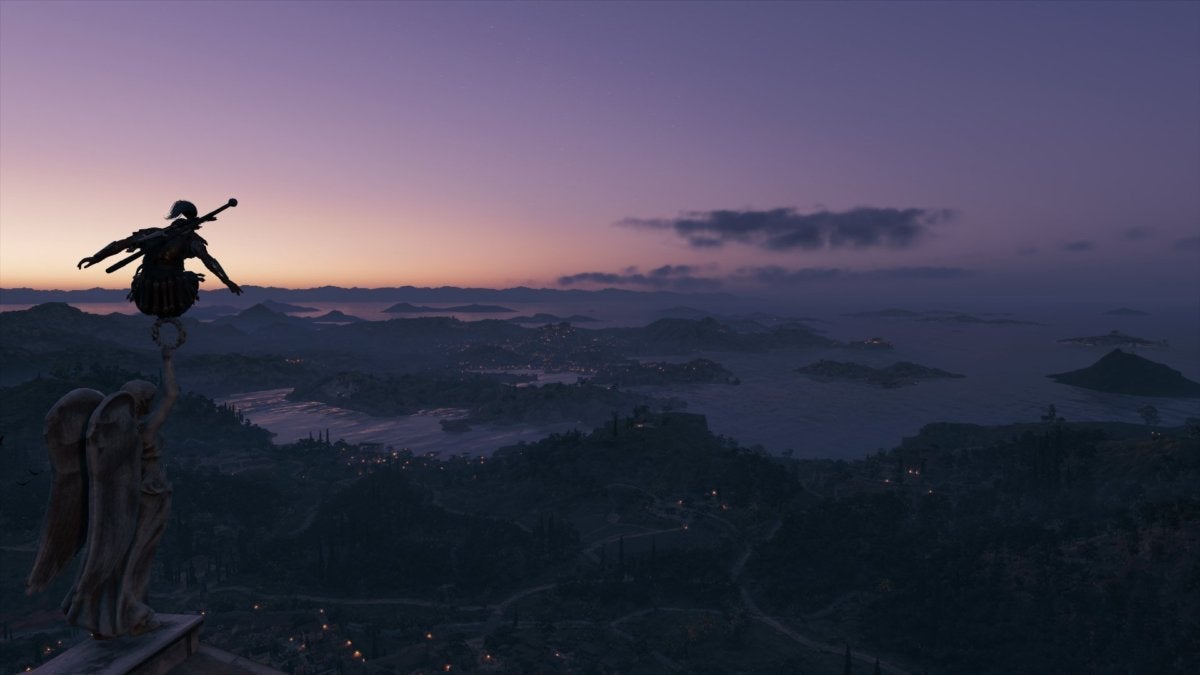
Image by Ubisoft
Assassin’s Creed: Odyssey ($60 on Humble) looks much the same as its predecessor, the Egyptian-themed Origins. That said, I spent most of my time with Origins raving about its draw distance—“You can see the Lighthouse at Alexandria from across the map.” If there’s one thing to know about Odyssey, it’s that the game is massive. Like, multiple times the size of Origins. No surprise, the draw distance is fantastic here as well, especially from the top of the snow-capped Mount Taygetus.
There’s an argument to be made that Assassin’s Creed: Odyssey is too damn big, from a game and story perspective—but those arguments don’t matter when we’re talking raw technical prowess. Odyssey is certainly an impressive achievement in that regard.
Hitman 2
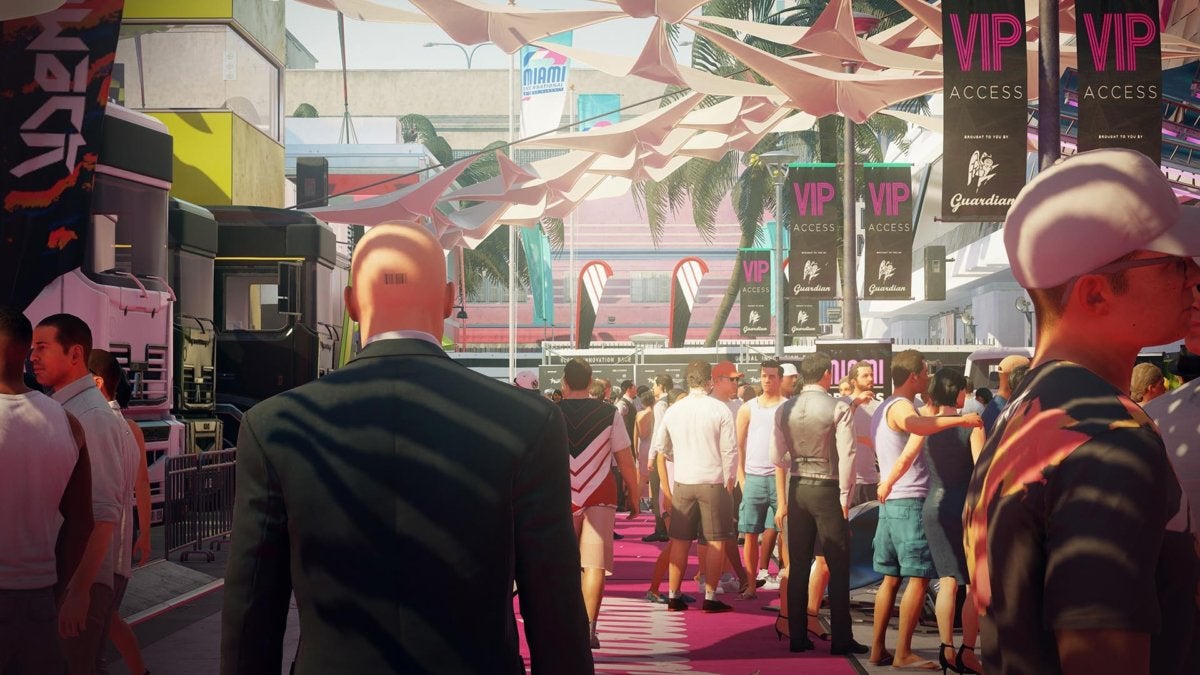
Image by IO Interactive
Hitman 2 ($60 on Humble) might not immediately put you in a “Can it run Crysis?” mindset, but it’s one of 2018’s most subtly taxing games, for a number of reasons. First up: Reflections. All of Hitman 2’s mirrors are entirely functional, meaning enemies can spot you sneaking up behind them. It has a minimal impact on the game itself most times, but that extra rendering still requires a substantial performance investment. Yes, that’s right, working mirrors are still a noteworthy hurdle for developers in 2018. Game development’s wild sometimes.
Crowds and foliage are also performance-hungry though, and Hitman 2 is full of both. The Miami level, for instance, features both a functional racetrack and a museum, both teeming with onlookers, while the Colombia level is packed with greenery for Agent 47 to hide in. There’s unfortunately no official benchmarking tool this time around, but Hitman 2 is still a great stress test—and one of 2018’s best games as well.
Final Fantasy XV
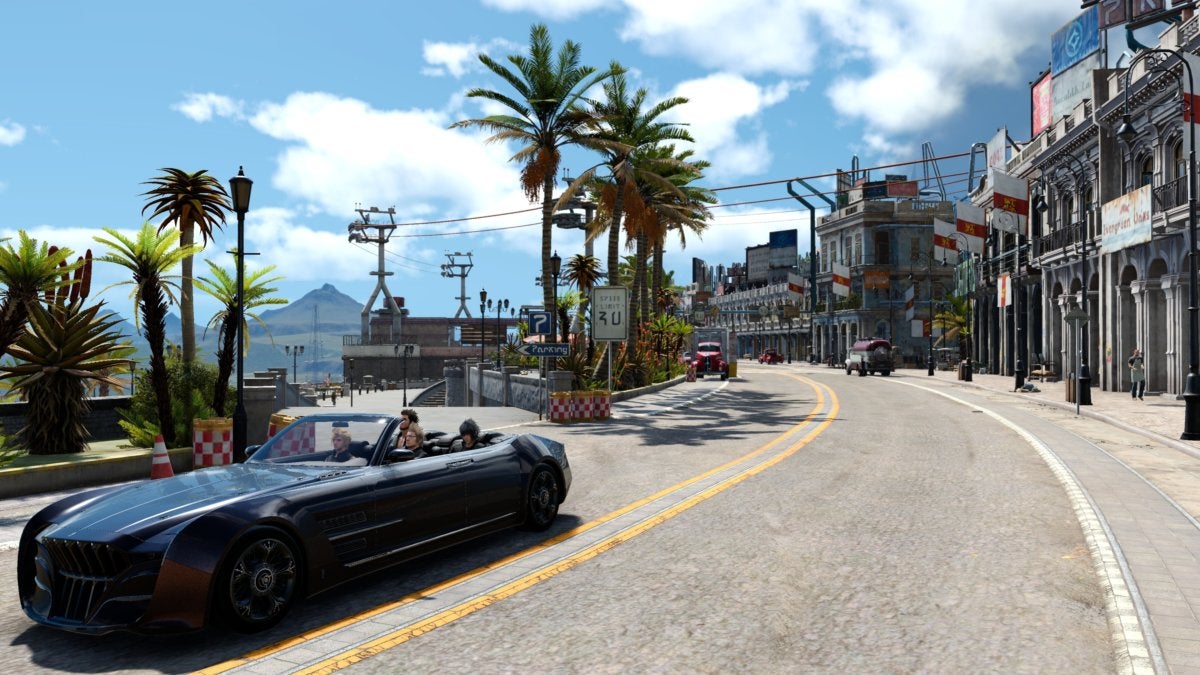
Image by Square Enix
Here’s all you need to know: In order to play Final Fantasy XV at 4K, you need 155GB of space for the install. Yes, you read that number right. And here I thought Forza Motorsport 7’s 99GB install was bad.
The full 155GB install is optional at least, but come on—you know you want it. And credit where credit’s due, Final Fantasy XV ($50 on Humble) runs like a champ on PC and looks absolutely stunning when maxed out, with tons of lush foliage, incredible draw distances, and some of the most realistic skin, hair, and fur I’ve ever seen in a video game. Also, for whatever reason, some of the most detailed-looking food.
Project Cars 2/Forza Motorsport 7
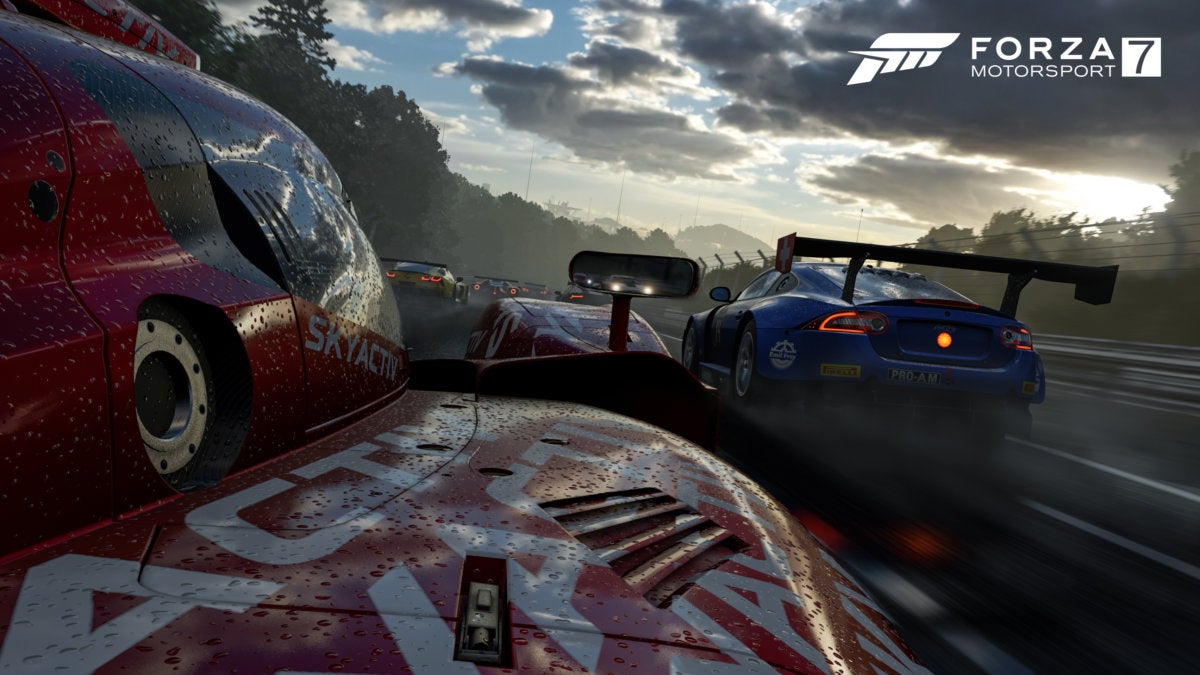
Image by Microsoft
2017 was a crowded year for beautiful racing games, with Project Cars 2 ($60 on Humble) releasing in September and then Forza Motorsport 7 ($60 on AmazonRemove product link) arriving on PC a few weeks later. There’s plenty to be said about both games, and I’m not here to critique tire models or whatever. Forza is a bit more arcade-sim, Project Cars 2 a bit more sim-sim.
Both look great in their own way. I think Project Cars 2 looks more photorealistic, but Forza 7’s slightly stylized graphics are no slouch—especially the incredibly dynamic sky/weather tech that debuted in Forza Horizon 3 and then returned in Forza 7. It’s worth noting also that Project Cars 2 supports VR headsets, if you want that ultimate racing experience (or just really want to stress-test your PC).
Unfortunately, Microsoft broke the “Forza Motorsport one year, Forza Horizon the next” trend in 2019, the first Forza-less year since 2010. Everyone knows new consoles demo best with a new car game, and Forza Motorsport 8 is undoubtedly waiting in the wings for the launch of the next Xbox in 2020. I can’t wait to see how shiny those cars are.
Kingdom Come: Deliverance
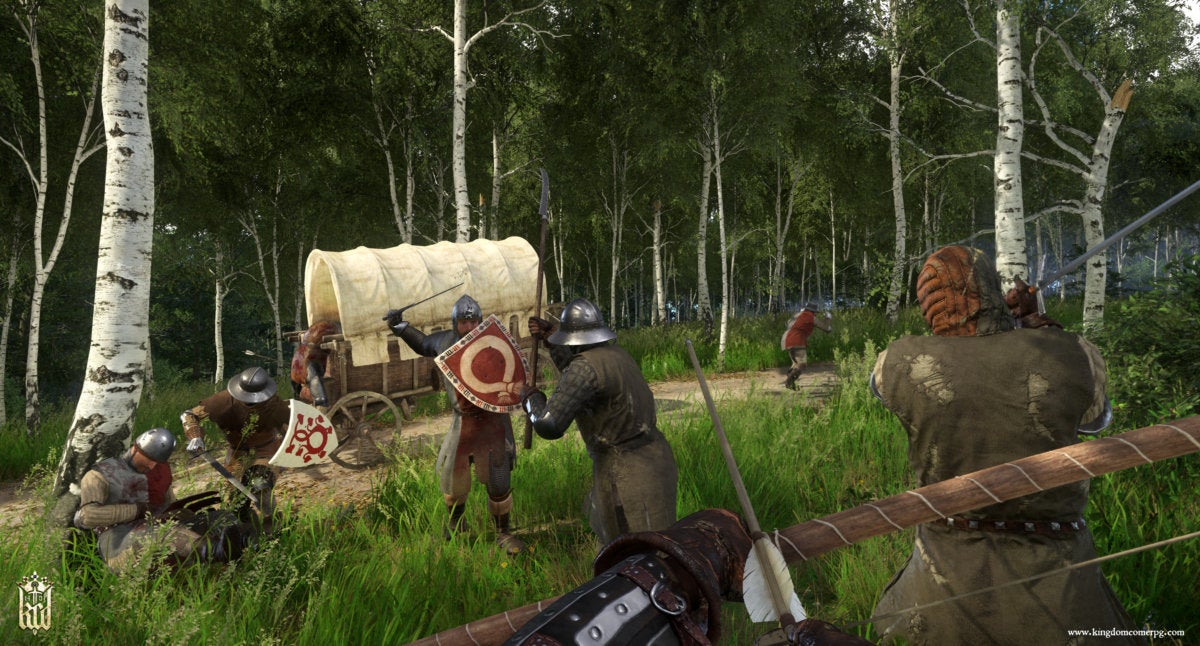
Image by Kingdom Come: Deliverance
A game engine is just a tool, and you can use that tool to do anything—but generally, like a hammer, it’s mostly suited for a specific thing. And CryEngine? It’s mostly suited for making Crysis, a.k.a. ultra-detailed shooters with a lot of foliage.
Kingdom Come: Deliverance ($60 on Humble) is not Crysis. Instead it’s an open-world RPG, a “realistic” recreation of a sliver of medieval Bohemia. And yes, there’s a lot of foliage, but it’s still very weird Warhorse Studios decided to use CryEngine for this project. More power to them, though—Kingdom Come: Deliverance looks absolutely phenomenal at times, especially those dark old-growth forests.
Witcher 3: Wild Hunt

Image by CD Projekt Red
The Witcher 3: Wild Hunt ($50 for GOTY Edition on Humble) wasn’t just our favorite game of 2015—it’s also a great candidate for testing a new setup. We can talk “downgraded graphics” until we’re blue in the face, but at the end of the day The Witcher 3 looks extremely pretty. And there’s quite a lot of it to look at.
If you’re running an Nvidia card, The Witcher 3 is one of your best bets for testing out a bunch of GameWorks technology, from Geralt’s bouncy hair to HBAO+ (ambient occlusion).
Honorable mention still goes to The Witcher 2 with ubersampling turned on. It doesn’t look as pretty as The Witcher 3, but it’ll sure melt your graphics card.
Dishonored 2
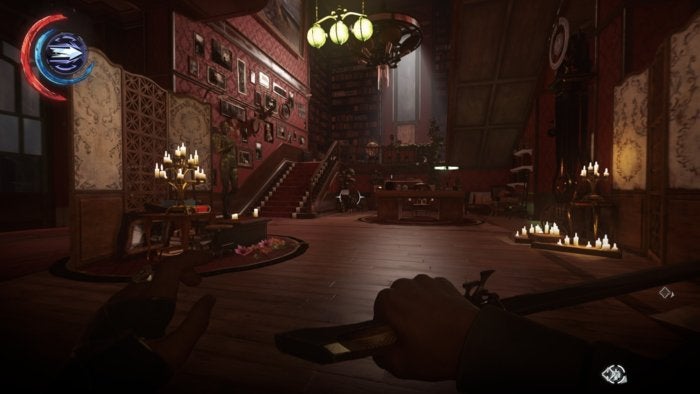
Image by Dishonored 2
There are two reasons Dishonored 2 ($40 on Humble) could make this list. One is rather ignominious: It may quite literally punish your PC. On release, Dishonored 2 was knocked for being poorly optimized, with the game suffering from all manner of stuttering and bugs. Those issues are mostly rectified, though you’ll still see scattered claims on Steam of poor performance—and the game can indeed be a bear if you try to run it maxed out.
Set aside the lackluster initial PC port, though, and Dishonored 2 is quite an impressive piece of work. Its missions attempt feats I’ve never seen before in any game, such as the Clockwork Mansion, a house that rearranges itself as you traverse through it, whole walls sliding into the floor and new passages appearing at the pull of a lever. The writing ain’t any better than in the first Dishonored (and in some cases it’s worse), but the level design at least makes Deus Ex: Mankind Divided look archaic by comparison.
Arkane also released Prey ($40 on HumbleRemove product link) in 2017. It’s worth noting because the port runs (on average) quite a bit better than Dishonored 2 and looks just as visually stunning. If you prefer System Shock 2 to Thief, space vistas to pseudo-Victorian “whalepunk,” then be sure to check out Prey ($40 on Humble). It’s fantastic—probably one of 2017’s top games.
Arma III
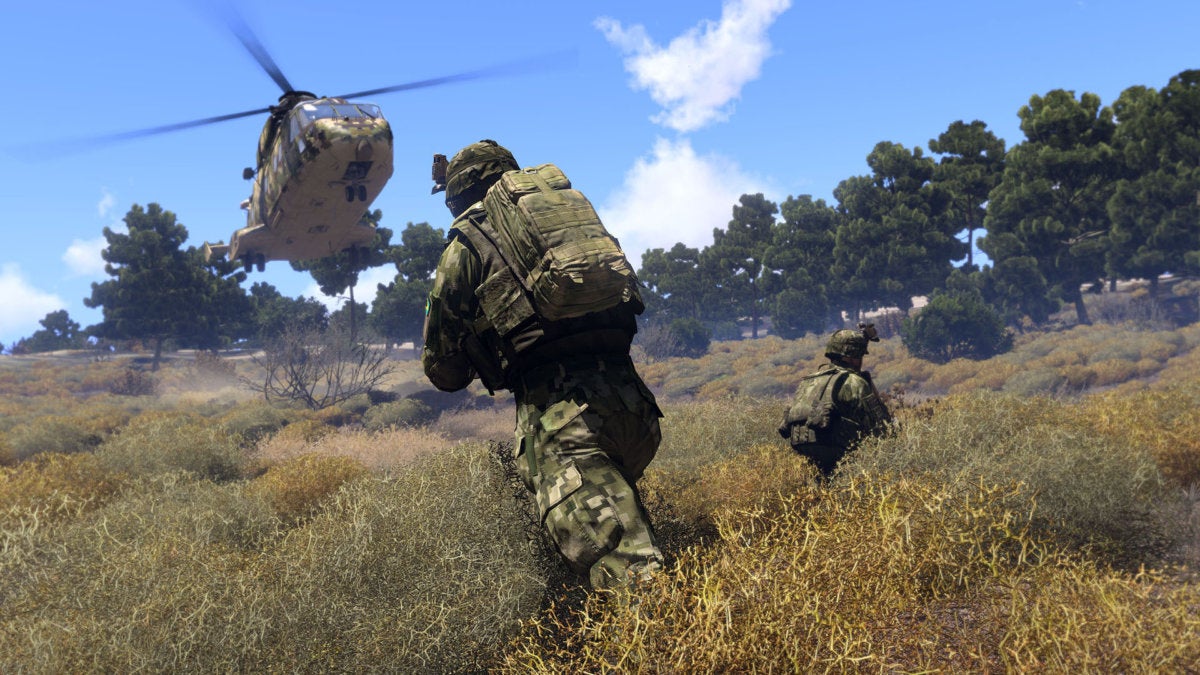
Image by Bohemia
While plenty of games boast a respectable draw distance, if you want the crowned champion look no further than Arma 3 ($30 on Steam). Go ahead, set the draw distance to 25 kilometers. I dare you.
Arma 3 also has some beautiful lighting and particle effects. Thanks to the fact that it’s pretty atrocious at utilizing multiple processor cores, you can stress-test your CPU at the same time. Tracking all those bullet physics and moving targets in real time can murder your processor. If you have all the graphics options dialed up you’ll have trouble breaking the 60-fps mark in this six-year-old game, even with the most potent PC hardware.
Fallout 4 VR

Image by Bethesda
We used to have a generic “VR Games” slide on this list, but Fallout 4 VR ($60 on Humble) is so heads-and-tails above anything else I’ve seen VR do, I think it’s time to call it. Fallout 4 is a difficult game to run even in its standard, monitor-bound form. Now imagine taking that entire world, running it at a decently high resolution, and maintaining 90 frames per second.
Bethesda made some compromises to make it happen, but it did happen. Fallout 4 VR is the full, 100-plus-hour Fallout 4 experience, but on an HTC Vive. It’s absolute hell on a graphics card, and it can be even more punishing thanks to full mod support.
There are better-looking VR games out there: Trials on Tatooine, Google Earth VR, Everest VR, and Call of the Starseed all come to mind. But Fallout 4 VR is just a stunning technical achievement.



